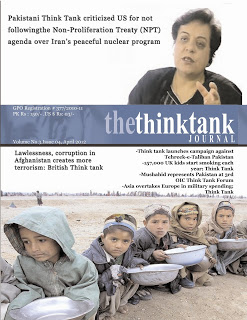As the world’s two economic powerhouses convene for a second day of high-stakes negotiations in Spain on September 15, 2025, the spotlight is firmly on the looming deadline for TikTok’s Chinese owner to divest or face a U.S. ban. Led by U.S. Treasury Secretary Scott Bessent and Chinese Vice Premier He Lifeng, these talks represent a critical juncture in the ongoing trade war, where tariff extensions and tech tensions collide. With the TikTok deadline set to expire on September 17, President Donald Trump’s recent softening stance adds intrigue: Will the talks yield a fourth delay, or could they unravel the fragile truce?
A Continuation of Fragile Diplomacy
The negotiations at Santa Cruz Palace in Madrid kicked off on September 14, building on the July 2025 Sweden summit where both sides extended their tariff truce by 90 days. This temporary pause averted a full escalation of duties on $500 billion in bilateral trade, but underlying issues—intellectual property theft, subsidies, and market access—remain unresolved. Bessent, a Wall Street veteran known for his pragmatic approach, and He, Beijing’s economic strategist, are under pressure to deliver progress amid domestic economic headwinds.
From a diplomatic angle, these talks signal a pragmatic thaw after years of brinkmanship. The U.S., grappling with 3.2% inflation and supply chain disruptions, needs Chinese manufacturing to stabilize prices, while China faces a slowing economy with 4.7% GDP growth in Q2 2025. Analysts view the Madrid venue—neutral ground in Europe—as a nod to multilateralism, potentially paving the way for broader WTO reforms. However, with Trump’s unpredictable style, the truce’s extension could be short-lived if no concrete deals emerge.
From Ban Threat to Bargaining Chip
At the heart of the talks is TikTok, the ByteDance-owned app with 170 million U.S. users, facing a ban unless sold to an American entity by September 17. Trump’s reversal—from calling for a ban in his first term to three delays and now hinting at more—turns the app into a trade leverage tool. In a September 14 statement, Trump remarked, “We may let [TikTok] die. Or we may… I don’t know. It depends. Up to China, it doesn’t matter too much,” downplaying national security fears as “highly overrated.”
This shift reframes TikTok not as a security risk but as a concession in broader negotiations. ByteDance’s algorithm, accused of data harvesting for Beijing, has sparked bipartisan U.S. concerns, but Trump’s comments suggest the ban could be traded for Chinese concessions on tariffs or IP protections. Last month’s hints at indefinite extensions align with his “America First” ethos—prioritizing economic wins over tech isolationism. For ByteDance, valued at $220 billion, a forced sale could fetch $50-70 billion, but finding a buyer like Oracle or Microsoft amid antitrust scrutiny remains challenging.
The angle here is economic pragmatism: A ban would disrupt 170 million users and cost the U.S. economy $10 billion annually in ad revenue and jobs, per a 2025 Brookings Institution study. China’s retaliation—potentially restricting U.S. tech exports—could escalate, making TikTok a pawn in a larger game.
Tariffs, Tech, and Global Supply Chains
The talks extend beyond TikTok to the core of the U.S.-China trade war, which has cost $1.7 trillion globally since 2018. The current truce suspends 25% tariffs on $300 billion in Chinese goods, but failure to extend could reignite duties, hiking U.S. consumer prices by 2-3%. He Lifeng, representing Xi Jinping’s “dual circulation” strategy, seeks market access for Chinese EVs and semiconductors, while Bessent pushes for fairer trade practices.
Analyzing from a supply chain perspective, the talks could reshape global tech. TikTok’s fate influences ByteDance’s international expansion, potentially boosting U.S. rivals like Instagram Reels. A prolonged truce might stabilize semiconductor flows—China supplies 60% of rare earths for U.S. chips—but unresolved issues like Huawei bans could derail progress. Economists predict a 0.5% U.S. GDP hit if talks collapse, with China facing 1.2% growth drag, per IMF models.
Trump’s flexibility on TikTok hints at a deal-making mindset, possibly linking the app’s survival to Chinese purchases of U.S. LNG or agricultural goods, echoing Phase One of the 2020 deal.
Beyond Economics to Security and Influence
Zooming out, the Madrid talks are a microcosm of U.S.-China rivalry. TikTok symbolizes Beijing’s soft power—its algorithm shapes global youth culture, raising espionage fears. Trump’s downplay of risks contrasts with intelligence reports citing data flows to China, but his comments may be tactical, using the deadline to extract concessions on Taiwan or South China Sea disputes.
From a security lens, a TikTok sale could mitigate risks but empower U.S. firms, potentially stifling innovation. China’s response—threatening reciprocal bans on U.S. apps like Facebook—could fragment the internet, costing $100 billion in cross-border data flows annually. The talks also intersect with allies: Europe’s GDPR scrutiny of TikTok and India’s outright ban highlight a multipolar pushback against Chinese tech dominance.
Extension, Deal, or Escalation?
As day two unfolds, scenarios abound. A fourth TikTok delay seems likely, buying time for a structured sale amid antitrust reviews. A breakthrough could include tariff reductions and IP safeguards, boosting global markets—Dow futures rose 1% on September 14 news. Escalation, though, risks a “decoupling” spiral, with U.S. firms like Apple losing $200 billion in China revenue.
Stakeholders watch closely: U.S. users fear content disruption, while creators worry about livelihoods. ByteDance’s silence underscores the high stakes, as the app’s 1.5 billion global users hang in the balance.
TikTok as the Trade War’s Litmus Test
The US-China talks in Spain are more than diplomacy—they’re a high-stakes poker game where TikTok is the wild card. Trump’s evolving stance transforms the ban threat into a bargaining chip, potentially averting economic fallout while addressing security concerns. As Bessent and He negotiate, the outcome could redefine global trade, tech flows, and superpower relations. With the deadline ticking, will pragmatism prevail, or will tensions boil over? For businesses, users, and policymakers, the next 48 hours could reshape the digital world order.



